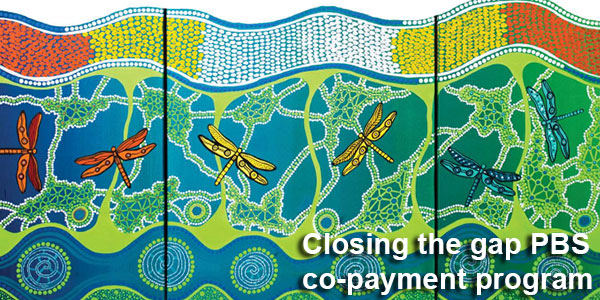1:30min

By Helen Carter
Journalist
Prescribers including therapeutically endorsed optometrists and Aboriginal Health Workers will be able to register eligible Aboriginal and Torres Strait Islander patients on the Closing the Gap (CTG) PBS when changes come in on 1 July 2021.
Pharmaceutical Benefits Scheme prescribers will also no longer be legally required to write or electronically print ‘CTG’ on eligible PBS prescriptions for registered Aboriginal and Torres Strait Islander people. However, annotation of a PBS script with ‘CTG’ will help community and Section 94 Approved Private Hospital pharmacists, when dispensing the medicines, know that the patient is registered for the program.
The Closing the Gap (CTG) Pharmaceutical Benefits Scheme (PBS) Co-payment program was established in July 2010 to improve access to affordable PBS medicines for Aboriginal and Torres Strait Islander people living with, or at risk of, chronic disease and who, in their doctor’s opinion, would experience setbacks in the prevention or ongoing management of chronic disease if they did not take the prescribed medicine and would be unlikely to adhere to their medicines regimen without assistance through the program.
From 1 July 2021, it will be easier for eligible Aboriginal and Torres Strait Islander people to access medicines through the CTG PBS Co-payment program.
Optometry Australia advocated for change
Optometry Australia began advocating for change in 2019 when it sought an amendment to the Closing the Gap PBS Co-payment Measure to facilitate streamlined primary eye health care and improve eye health outcomes for Aboriginal and/or Torres Strait Islander people.
‘We proposed that to streamline and facilitate the provision of care to those most in need, optometrists delivering services to Aboriginal and Torres Strait Islander people through the Visiting Optometrists Scheme (VOS) should be able to annotate PBS prescriptions for eligible patients,’ Optometry Australia’s Policy and Advocacy Manager Sarah Davies said.
‘This would remove extraneous steps in the care pathway for these patients, enabling effective and ongoing management of chronic-disease related eye disease and improving adherence to medication regimens.
‘The ability to annotate PBS prescriptions for eligible patients, to enable them to access the Closing the Gap – PBS Co-payment Measure, would assist optometrists and their Aboriginal and/or Torres Strait Islander patients with the ongoing management of their chronic disease-related eye conditions, as well as in adherence to their medication regimen.’
An information sheet for prescribers, Aboriginal and Torres Strait Islander Health Practitioners and their peak bodies (factsheet 4) details changes to happen from 1 July including:
- A new centralised patient registration database for the program, managed by Services Australia, will go live. Current registration details will be transferred to the new database.
- Any PBS prescriber or AHPRA registered Aboriginal and Torres Strait Islander Health Practitioner registered with Medicare as a provider can register eligible Aboriginal and Torres Strait Islander people for the program via Health Professional Online Services (HPOS) if they are not already registered.
- Once a PBS prescriber or AHPRA registered Aboriginal and Torres Strait Islander Health Practitioner registered with Medicare as a provider has assessed an Aboriginal and Torres Strait Islander person as being eligible for the program, they can authorise a HPOS delegate to act on their behalf to enter the registration details into HPOS. Before you can link your delegate to your HPOS account they will need to register for their own Provider Digital Access (PRODA) account.
- Eligible Aboriginal and Torres Strait Islander people can be registered for the program no matter where they live within Australia, and regardless of their chronic disease status. The registration will cover Aboriginal and Torres Strait Islander people even if they move to a different health clinic.
- Any PBS prescriber can issue PBS General Schedule medicine prescriptions for Aboriginal and Torres Strait Islander people who are registered for the program.
- PBS prescriptions issued by PBS prescribers within public hospitals will now be eligible to be dispensed by any community pharmacy or Section 94 Approved Private Hospital pharmacy.
- PBS prescribers can confirm if Aboriginal and Torres Strait Islander people are registered for the program via HPOS prior to issuing a PBS script to be covered under the program.
In its proposal Optometry Australia said: ‘There is a significant ‘gap’ in eye health between Indigenous and non-Indigenous Australians.
‘Recent research shows that Aboriginal and Torres Strait Islander people have three times the rates of blindness and vision impairment as non-Indigenous Australians.
‘Diabetes-related eye disease is a large contributor to this, with one in three Aboriginal and Torres Strait Islander people being diagnosed with diabetic retinopathy.
‘It is estimated that 98 per cent of diabetes-related vision loss is preventable or treatable, with appropriate and timely access to an optometrist for diagnosis, management and treatment options.’
Tagged as: Advocacy & government, Indigenous eye health, Medicare-MBS-PBS